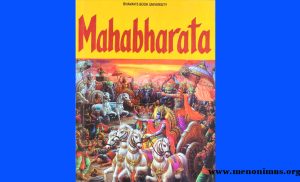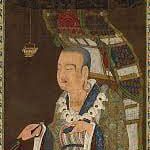Mahabharata by Vyasa-A Review
Mahabharata by Vyasa-A Review
Mahabharata by Vyasa-A Review
Introduction:
The ‘Mahabharata’ stand as one of the most revered and extensive literary works in world history. Composed in ancient India in Sanskrit by the sage Vyasa, it comprises nearly 100,000 shlokas (verses) and is considered one of the two major Sanskrit epics, the other being the ‘Ramayana.’ The ‘Mahabharata’ is not only a gripping narrative but also a treasure trove of philosophy, moral dilemmas, and profound teachings.
Plot and Structure:
The epic revolves around the intricate storyline of the Kurukshetra War between the Kauravas and the Pandavas, two royal families locked in a bitter rivalry for the throne. The story is interwoven with numerous subplots, parables, and philosophical dialogues, making the ‘Mahabharata’ an all-encompassing account of human experiences. It is divided into 18 parvas (books) and covers a wide range of themes, from cosmic creation to ethics, politics, and spirituality.
Characters:
The epic boasts an array of memorable characters, each with distinct traits and motivations. The virtuous Pandavas, led by Yudhishthira, exhibit dharma (righteousness) even in the face of adversity. On the other hand, the Kauravas, headed by the ambitious Duryodhana, embody arrogance and deceit. Krishna, the divine charioteer, serves as the moral compass of the narrative, imparting valuable lessons through his interactions with the characters.
Themes and Philosophy:
The ‘Mahabharata’ delves into intricate moral dilemmas, ethical choices, and the complexities of human nature. It addresses concepts like dharma (duty/righteousness), karma (action and its consequences), and moksha (liberation). The dialogues between characters like Arjuna and Krishna in the Bhagavad Gita encapsulate these philosophical discussions and have inspired countless interpretations.
Narrative Techniques:
Vyasa employs a diverse range of narrative techniques, including dialogue, poetry, and parables, to convey its messages. The epic skillfully combines mythology, history, and allegory, creating a tapestry of interconnected stories that highlight both personal and cosmic struggles.
Social Relevance:
The ‘Mahabharata’ remains relevant to contemporary society, as it addresses timeless themes such as power, conflict, familial relationships, and moral ambiguity. Its exploration of human flaws and virtues serves as a mirror to the human condition, allowing readers to reflect on their own actions and choices.
Cultural Impact:
The epic’s influence is evident not only in Indian literature, philosophy, and art but also in the broader cultural landscape. It has inspired countless adaptations, retellings, plays, and performances across various mediums, demonstrating its enduring legacy.
Critique:
While the ‘Mahabharata’ is a literary masterpiece, some readers might find its vast scope and numerous subplots overwhelming. The text’s sheer length can be daunting, and its archaic language can pose a challenge for modern readers. Additionally, interpretations and translations may vary, leading to differing understandings of its intricate philosophical concepts.
Conclusion:
The ‘Mahabharata’ is a monumental achievement in the realm of world literature. Its blend of captivating storytelling, profound philosophy, and deep moral exploration has ensured its enduring place in human culture. This epic continues to captivate readers, offering insights into the human psyche and the complexities of existence. Its ability to transcend time and culture speaks to its universal appeal and the profound wisdom it imparts. 0 0 0.
You May Like: The Satanic Verses by Salman Rushdie-A Review
N. B. The article originally belongs to the book ‘The Reviews of Epic Literature Around the World Vol-I‘ by Menonim Menonimus.








